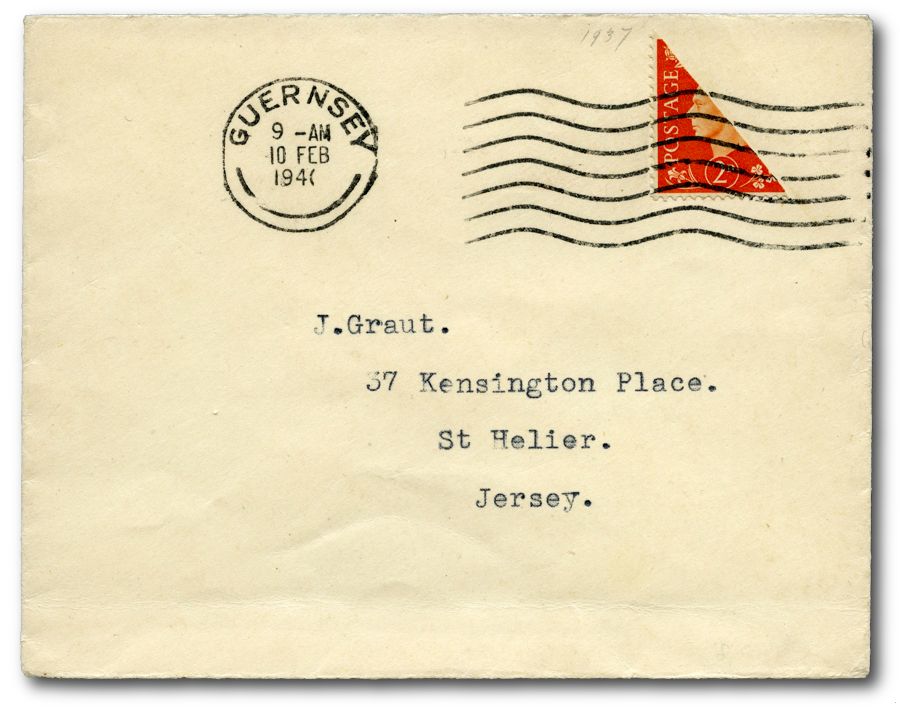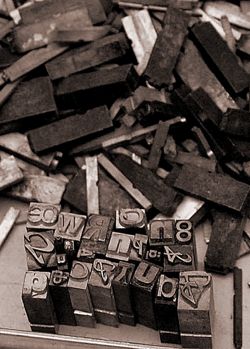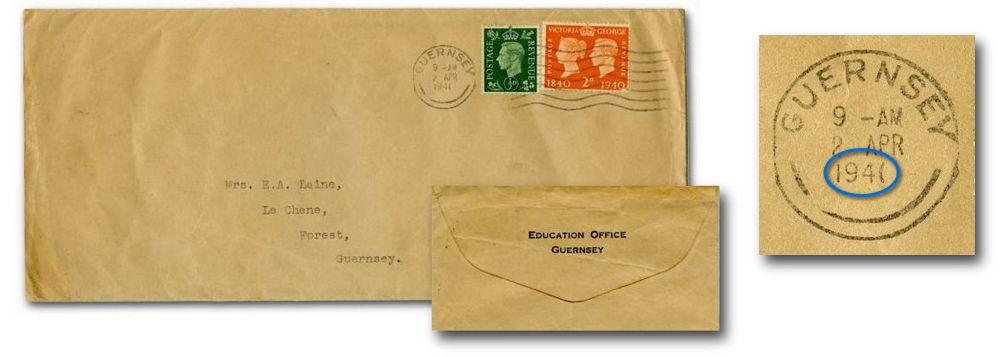The Channel Islands at war — Shortages at the island’s post offices
Within less than a year of the German occupation, supplies of British stamps began to run low; on December 27, 1940, the German occupation authorities allowed existing stocks of 2p British stamps to be bisected diagonally to create 1p values.
Bisected stamps were first used on Guernsey, then on Jersey. Some 2p King George V stamps held by collectors were also bisected and used.

Bisected stamps are not rare. Generally speaking, post office officials around the world have never allowed such practices, preferring instead to issue new, lower-value stamps or to overprint stamps with new, lower values. In the Channel Islands, the Germans who had ultimate responsibility for the islands’ postal system couldn’t order more British stamps, and they probably didn’t see that bisecting — vandalising! — British stamps was anything but positive: what loyal Nazi wouldn’t want to take a pair of scissors to an image of King George VI?
Shortages of postal supplies

British stamps weren’t the only postal commodity to be in short supply in the occupied Channel Islands. Circle Date Stamp1 cancellation hammers, which were in common use throughout the late 19th and 20th Centuries, were designed to use factory-produced steel moveable type, allowing postal clerks to change the day, month, and year of cancellation. When the moveable type wore out or was lost, it had to be replaced.
With the arrival of the German occupation force in the Channel Islands, it was no longer possible to order moveable type from Great Britain. The solution was to modify the available moveable steel type, or make such type locally.
One result of this particular shortage is shown in the Guernsey cover below; note that the “1” of “41” in the circular portion of the cancellation is curved. The explanation? Because the post office did not have moveable metal type representing the numeral 1 for the new year, 1941, and could not order new type from Great Britain, a postal clerk improvised by filing off the right-hand two thirds of the “0” of “1940.”

Another possible indication of shortages: the circle of the Circle Date Stamp is flattened on the left side, indicating that the cancellation hammer had been dropped and dented. Normally, a hammer damaged in that way would have been replaced.
With British stamps becoming ever more scarce in post offices, German authorities made one more attempt to deal with the lack of postage stamps. During the latter months of 1940, when supplies of British stamps were exhausted, letters had to be handed over the counter with cash in order to be franked by postmark. This soon proved to be inconvenient and was presently obviated by the issue, under the orders of the Occupying Authority, of stamps designed and printed locally.
Next, in Part 4: Jersey and then Guernsey issue occupation stamps (which are the first "home-grown" stamps in the Channel Islands). On Jersey in the new year of 1943, postal workers have to improvise, using locally made steel moveable type to create the “43” of 1943.
-
A Circle Date Stamp (also written as “Circle Datestamp” and abbreviated “CDS”) is postmark incorporating a circle and the date and place of posting, and sometimes the time of posting. ↩︎